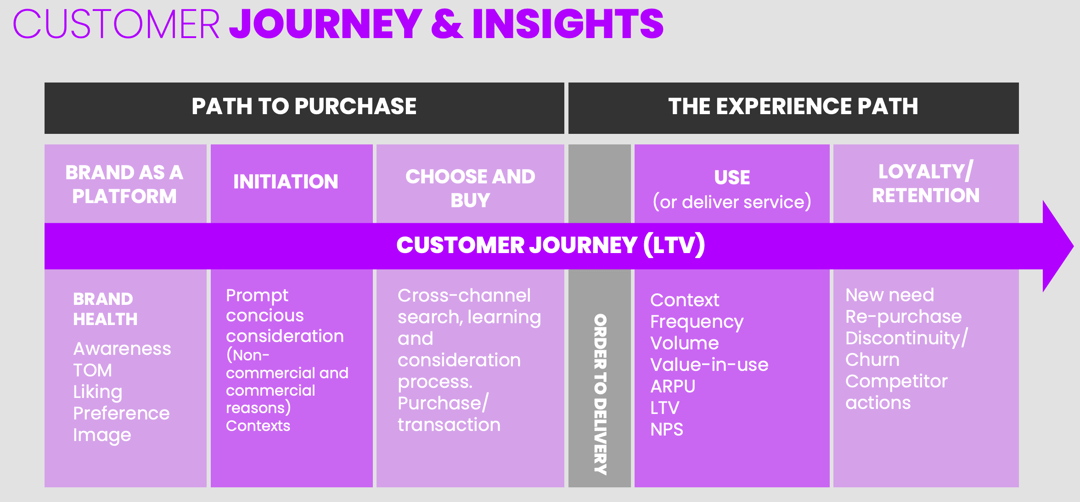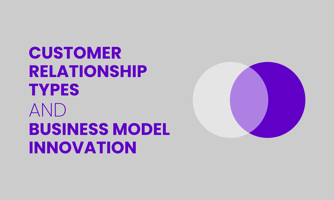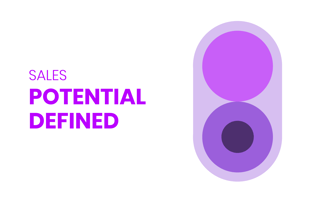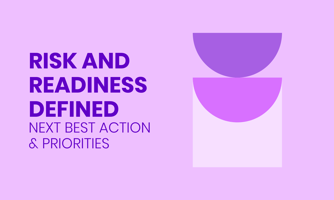Early in my career marketing was all about customer acquisition. Then management realized, that...
Customer journey management - deep dive
Funnel is great way to visualize the ideas and set metrics for a customer journey, but it’s better to look at it from the customer’s point of view. Understanding the customer’s journey. This deep dive is written for specialists concentrating on change consulting and management.
Before the deep dive to customer journey, its good to understand a couple of things:
- Understanding market dynamics: Demand vs. Sales, Low intensity vs. High Intensity and their impact to Funnels
- Customer Relationship types: from single purchase to repeated buying behavior and continuous relationship and all their possible combinations
path to purchase and evolving customer relationship
This approach doesn’t split organizational responsibilities to funnel stages. Instead it is a platform for collaboration. Along the journey, in each stage, sales, marketing, channels, customer service and offering all contribute together. For a customer company is one entity and all experiences related to it build a brand. Brand development is an outcome of corporate DNA and a responsibility of the CEO and management team.
The customer journey is where strategy, offering and operations become customer experiences and form a brand and market position over time.

Brand as a platform: The situation before active consideration starts
Brand means customers’ awareness, context, emotions and attributes that they connect with a certain brand or product, which also stands for reputation. In case the area of decision-making is new to the customer and there is no previous experience about it, most of the learning could have been unintentional and possibly even unconscious. If the case has to do with decisions that have more frequency, all former experiences contribute to the customer’s view of the brand and category.
Brands are often our unconscious collections of perceptions and preferences and that is why they are not that easy to change. Creating such a position in the collective mind of a population or market means educating thousands and even millions of brains. Such training takes time and changes are surprisingly slow at the market and population level.
The awareness and familiarity translate as trust very easily unless the awareness of the brand is specifically negative. In the customer journeys brands represent the GPS that dictate how the customer journeys will go even before they start. Brands represent anchors and consideration groups that shape the customer’s journeys very strongly.
Initiation: When active consideration begins
In most customer journeys there is a moment, change or impulse that is a wake-up call for the customer. The main thing is that the impulse brings the consideration or realization to the customer’s conscious mind. This is when the customer becomes part of the active market. In B2B this activation is likely to concern multiple people.
Capturing insights from digital data about multiple people showing interest in something is a clear sign of the company’s activation. Naturally participation in events or booking discussions about it with sales is a clear sign too.
The key thing in initiation is change, and often it is a change in the customer’s situation that takes the customer from Addressable market to Obtainable market or directly to Active market. If we discover changes that have the power to initiate customers, we can manage and measure them. This is about acting on customer’s terms and needs instead of our internal campaign schedule.
Whatever the reasons for initiation are, it is imperative to understand them. When we can recognize their frequency, seasonality, context, related subjects, emotions and events, we can define how to be present in those moments and help customers. Being there in the right moment, in the right place, to the right people can be incredibly valuable and profitable.
Choosing and Buying: The learning, dreaming, considering and choosing journey to transaction
This is the actual funnel process in which the customer gets to know options (or not), uses different channels to learn more (or not) and eventually makes a choice about where, how and what to buy. Depending on the customer’s familiarity with the choice, intensity of the decision making and other variables, this process could take anything from minutes to months, or even years.
Depending on the brand and product, it could be known and preferred, an option among others or completely unknown. The goals and the drivers are very strongly category and offering specific. Getting an RFI or an RFP from the customer is already a victory.
If you spend enough time and effort to truly understand how customers make their decisions, where they make them and how you can influence them, it is possible to increase sales and conversion rate a lot with very little investments. Studying this behavior will also give you insights on the customer’s challenges and use-cases which can be used for offering and solution development, channel strategies and wider consideration.
In the best cases, sales have more than doubled without doing anything expensive, flashy or visible. From a competitor’s point of view they can’t understand how it is possible that they suddenly lose sales and market share without any visible changes in the market. As an added bonus, also the competitor’s campaigns sell the target brand’s offering, if customers engage with more than just one option along their journey.
In one client case their competitor’s campaign broke their own sales record, because the competitor initiated customers and got them activated, which brought them to the brand’s interfaces and they successfully converted them into sales. This is behavioral economics at its best and proof of brand’s long term value.
Order to delivery
Only applies to cases in which there is a waiting time between buying and experiencing the purchase. Sometimes this time could be rather long e.g. in the case of ordering a new car or buying an apartment before the building is ready means months, or more than a year of waiting. If we take the B2B perspective, this is the part of journey in which the final definitions for e.g. ERP or CRM systems are made. Defining and co-creating the end product is in such cases an Incredibly Important stage. In telecom or tech, this is also a planning process in which the migration from old to new is designed and all preparations are done. This is a stage in which many companies fail, which will create unnecessary pressure for sales. Sales people have created trusting relationships during the sales process and any insecurities the customers are feeling will backfire at sales.
A common challenge in this phase is that customers can feel left alone, forgotten and insecure while waiting, which is definitely not a great experience. The first priority is to give customers a peace of mind. The best feedback I have received from my customers is that they sleep better when working with me. That should be the mindset at this stage.
Keep customers up-to-date and service them during the delivery time. This is a possibility to differentiate from competition and deliver great branded experiences that enable stronger customer relationships and thus loyalty and up-sales potential. It is also potentially very effective to start customer education prior to delivery, so that they will feel good about their choice from the first day.
First experiences
The higher the intensity of buying is, the more important the product or service is to the customer, and the more the first impression matters. One interesting phenomenon related to this is the “un-packing X” -videos. In these videos’ customers show how they unpack their product and talk about their experiences as they do it.
First impression is often very important and may have a long term impact on the customer relationship and brand perception. It is imperative to recognize where things could go wrong: e.g. customer doesn’t know what to do, feels stupid or betrayed, can’t start the product or start using it. In case of Service experiences similar feelings of insecurity or being neglected are just as dangerous. Making the first experience surprisingly positive paves the way for great and long-lasting customer relationship, enables higher purchase frequency and potentially acts as a seed for new habits and preferences
Learning and living with the product/service
Products and services are very different by nature. Customer’s expectation is that the product or service meets expectations and everything works smoothly. This is also where you have to decide how you approach wider offering adaptation with the customer. If you have the capability to serve customers with a wider portfolio and create additional value, the first purchase is only a first step on a longer journey and collaboration. When you are already in a customer relationship, the customer will pay more attention to your other messaging and you have an opportunity to educate customers about the virtues and benefits of wider collaboration. In case we are in a serial buying business, the first purchase is an ice breaker. Making sure that the customer returns is naturally business critical.
Prioritise taking away any possible friction, disruptions or potential disappointments related to the use of product, continuous customer relationship or frequently occurring engagements. Random acts of kindness or other positive and surprising experiences that are worth sharing and remembering can be very valuable and increase word of mouth. The early relationship can potentially multiply measured by ARPU/ARPA, by designing the customer relationship and lifecycle carefully.
Defect, failure, re-purchase, end-of-agreement
The product runs out or breaks, there is no longer need for it, the agreement period ends, competitor innovation or sales activities disrupt the ongoing relationship… multitude of potential situations. All relationships end eventually, but you can influence the duration and value very much.
The most important thing is to understand what is inevitable and what can be influenced. Avoiding defects and negative churn is often the most cost-efficient way of boosting both top-line and bottom-line profitability. Especially in case of continuous relationships it is imperative to understand how and why people come to change service providers and how to be present at the right time with the right message to the right people. Preventing losses and negative experiences at the end also has a positive impact on the brand perception and win back activities.
At best, the end of a previous relationship is the beginning of the next and new relationship, or an extension to the already existing relationship. If the product runs out, breaks, wears out or the service experience ends, it’s just an opportunity for the next decision. The customer’s feeling at the end of the experience has a major impact on the potential of returning and preference or natural flow to re-purchase without even considering anything else. Very often ending is not really an end, but more like a pause, an ending of one is an opportunity to another.
This customer journey is the heart and foundation for all development and collaboration in a company and a great source of innovation and learning. Studying and mapping the customer journey is the first stage and you can turn that into a service blueprint by collaborating with your organization or a business design agency. In a Service Blueprint the customer journey is on top and supplemented with channels, roles and responsibilities, data and technology requirements. Your first step is to uncover the starting point: challenges, fears, pain points and reasons for defect and then design how to fix them. Service Blueprinting is about the practical application on how to run customer centric operations.
180ops has a lot to offer from discovery point of view as well as for continuous management and monitoring of change. The development of 180ops has its roots in these types of discovery and design projects. The technology and answers that are available in it have been designed to support this type of development and continuous management as well as operational execution.




